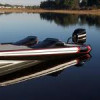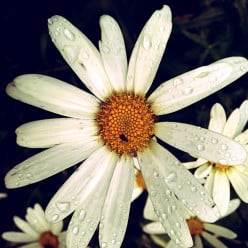Drafting a hub - dumb newbie questions
I've got an idea for my first hub and hope to start working on it in the next few days.
If I were writing my hub as a straight article, I would probably end up with 7-8 sections and use subheadings for each one.
Looking at the guide, I note a recommendation to use a number of smaller text capsules rather than one big one and mix them up with picture capsules.
How do you experienced hubbers go about designing this? Do you write all your text in advance and then chop it up into as many text capsules as you have sections? Do you start by deciding how many text capsules you want and their size and then write text to fit each one? Is there a maximum number of text capsules that shouldn't be exceeded for aesthetic reasons?
Also, I note there are instructions for inserting a URL into a picture capsule to link to an image on the Web. Does this mean I can link to any image, or can it only be to my own or a public domain image?It varies, sometimes I decide ahead of time how I will break it up and sometimes I just decide when I am creating the hub.
In terms of pictures, you should only use your own or public domain images.So far, the written hubs that I present have all come from free thinking and typing. I haven't had to write down a subject, before writing the hub itself.
But, as for you query about breaking down your text? I do that, but have no set standard to work by, like only so many sentences or words per capsule. I just write anything in one capsule, until I'm done writing. Then, to break it down, I copy and paste from one capsule to another, so as to keep everything in line and on point.
Linking to other images, I would recommend as UW says.I'm fairly new also, but I've posted a few hubs. Some were a less conventional format: a few sub-headings, with numbered lists under each. One hub (linked below), and I think it is my best so far, was treated a bit like an essay. I opened up with an introductory paragraph stating the intention and subject of my article, then spent the next few paragraphs (or capsules if you wish) discussing the intended subjects, and added pictures where appropriate.
(I don't know if we are allowed to paste links to our own hubs, but oh well...)
http://hubpages.com/hub/Weird-Wonderful-Dogs-Part-1
I'm by no means an expert, but that's my approach. Hope it helps!
It really depends on the length of the hub I am writing. In general, I write, edit and format in Word. I always keep a copy of what is written and what is published on HP and any other site I am using. After completing the article, I decide how and where it is appropriate to split it. Adding photos and videos are good ways to add emphasis and examples of what you are writing. After all the mock ups are done, I copy and paste into the hub (okay, I'm sure there is a shorter way, but I'm more comfortable doing it this way
 ) Hope this helps.
) Hope this helps. 
- Janettaposted 15 years ago
0
I'm like Cagsil--I just type, I don't copy paste anything or map out a structure. But, seperating your text is always a good idea. If you haven't already, take a little time to view other hubbers work. See how the layout their hubs. It can help a lot to see how others set things up

I typically write in a word processing format, then decide how to design the page. In having the hub written I can then layout where I want text breaks or pictures or how I want a particular paragraph highlighted with a photo or vice versa.
When I write, I've already got the capsules of text broken up. Sometimes I change my mind, though, since it's easy to fix.
On pictures, use your own, public domain ones (e.g. the "creative commons" ones), and you can use photos from some people who have tagged them "some rights reserved." When they post that label, there's usually a place to click that tells you that you can use the pictures as long as you give attribution (which for me, is a link back to their site's URL).You can try out different ideas when you are putting the hub together by using the preview feature; if I do n't like the lay out then I alter how much text goes into each capsule. You can save it (the hub) unpublished then think about it and then add or subtract what features you want at that stage. Sometimes I change the arrangement of the capsules and photos because I find the position of the ads. is not as I had expected.
There are no set rules. You might want to bear in mind that the recommended maximum length for any article on the internet is 1,500 words - there are longer Hubs, but most readers' eyes glaze over around the 1,500 word point, apparently. If your article is longer than that, you may want to consider splitting it up into two related Hubs (but try to make each one stand-alone as well).
If you want sub-headings, then make each new heading the start of a new text capsule.
Photos - all photos on the internet are copyright unless stated otherwise, so you can't just use any photo. Look for public domain photos (wikimedia) or photos that are licensed under Creative Commons for commercial use. For Creative Commons photos, you must include a hyperlink to the photographer's website in your Hub somewhere (not in the caption, because that doesn't link).
Google has a creative commons search but it's buggy, and often throws up copyright images, so I don't trust it. I use Flickr exclusively - go to their Advanced Search, click "creative commons" and "for commercial use" and you'll get all the photos you're allowed to use.Thank you all so much for taking the trouble to give me such detailed answers. It's a wonderful welcome to the world of hubbing.
I'm about to dive in and start *gulp*
Related Discussions
- 38
How do you like to prepare for a hub?
by Alistair Olver 12 years ago
How do you like to prepare for a hub?Do you like to write out an outline on paper first or start typing straight away?
- 21
How to Break up the Text with stuff between paragraphs
by Pamela Kinnaird W 14 years ago
A very kind soul noticed a month ago that I need to learn how to break up my text with photos or something between the paragraphs when my text is long. She explained how to do it. I tried and couldn't grasp it. Then I misplaced or accidentally deleted her email -- so I haven't...
- 15
I'm taking some advice, and I've never been here before.
by Wesman Todd Shaw 14 years ago
Someone told me that they thought the following hub of mine:http://hubpages.com/hub/High-End-Acoust … latpickersHad a lot of potential, and that I should submit it here. So I'm doing so, and hopefully I'm doing so correctly. I haven't been hanging out in the forum, but I think I...
- 7
Sources in Text Capsules?
by Jackie Standaert 5 years ago
Hi guys! I'm changing one of the papers I wrote last semester into an article. It was originally written in Microsoft Word and has plenty of endnotes. When I'm copy and pasting into a text capsule, the endnotes are automatically moved to the bottom of that capsule.Is there a way to have the...
- 16
Add pictures within an article
by CJ Kelly 12 years ago
My article has several different headings, each about a specific person. So I would like to add a photo of each at the heading. But how can move the photos that I've already upload on another capusle to the right place?
- 19
How do I insert photos into the text of my Hub?
by danielmybrother 17 years ago
Hi. Hope I'm not missing something glaringly obvious, but I can't seem to figure out how to get my uploaded photos inserted into the text of my Hub (it's a tutorial). I want to place individual photos next to the relevant section in the text. Is there a command for placing the capsules where you...















